Kapit is a rolled sticky rice cake with jackfruit and latik filling. Sweet, chewy, and loaded with coconut flavor, this Kapampangan delicacy is delicious as a snack or dessert.
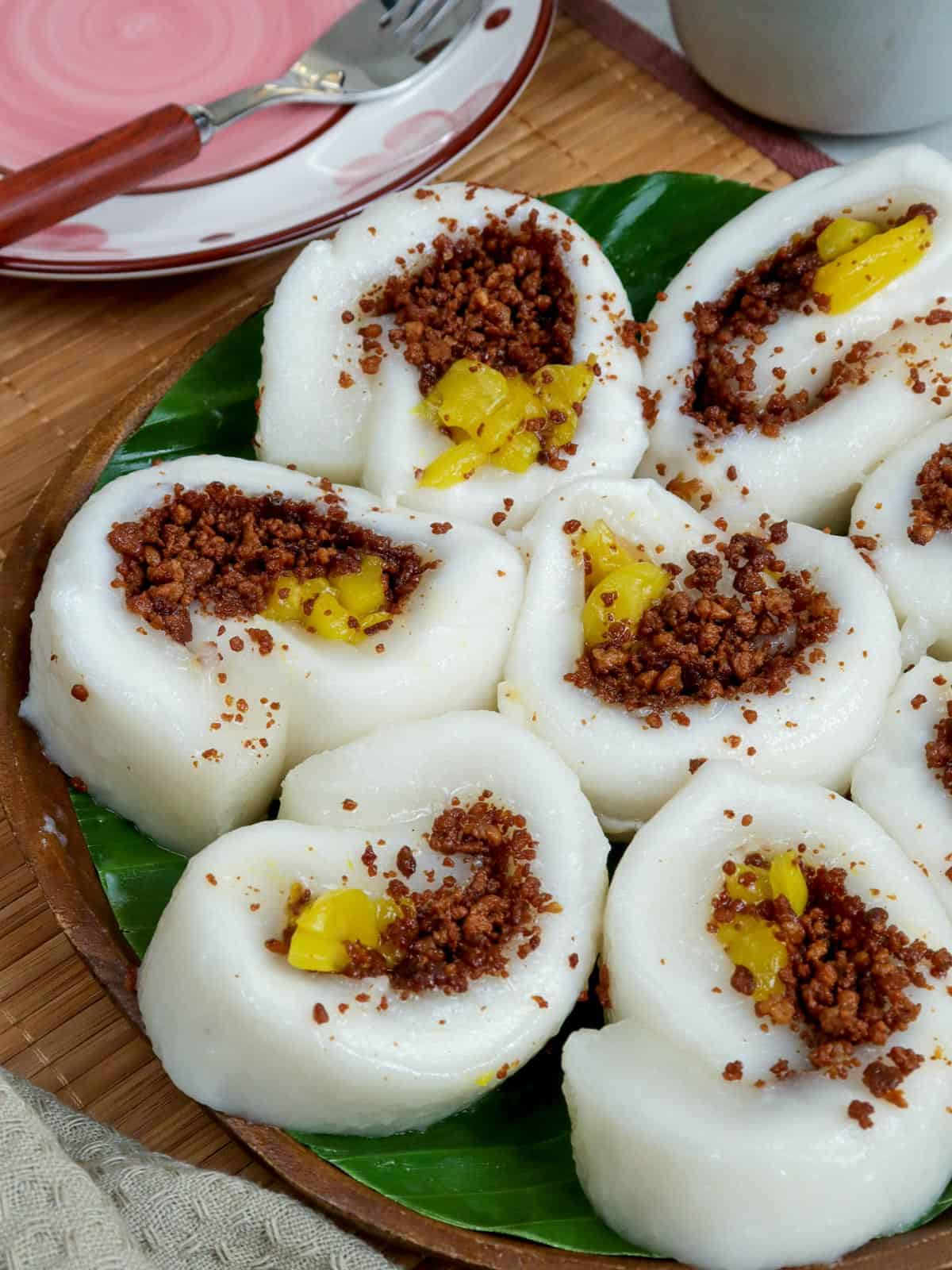
Kapit was one of the kakanin I learned to make on my recent trip to the Philippines, along with kalamay na gabi, sapin-sapin, and kalamay hati. I'll be sharing all the recipes here so make sure to check back often for these crave-worthy desserts!
What is Kapit
Kapit is a Kapampangan delicacy very similar to kalamay sa latik, but while the latter is bathed in arnibal syrup and garnished with latik and sweetened langka, the rice cake in Kapit is instead rolled around the coconut curds and jackfruit, and then wrapped in plastic film.
As its name, which means "sticky," suggests, this kalamay is soft and chewy. It's sold at almost every wet market or restaurant in the Pampanga region and is commonly eaten as a snack or dessert.
Ingredient notes
All you need are five ingredients to make this delicious native cake!
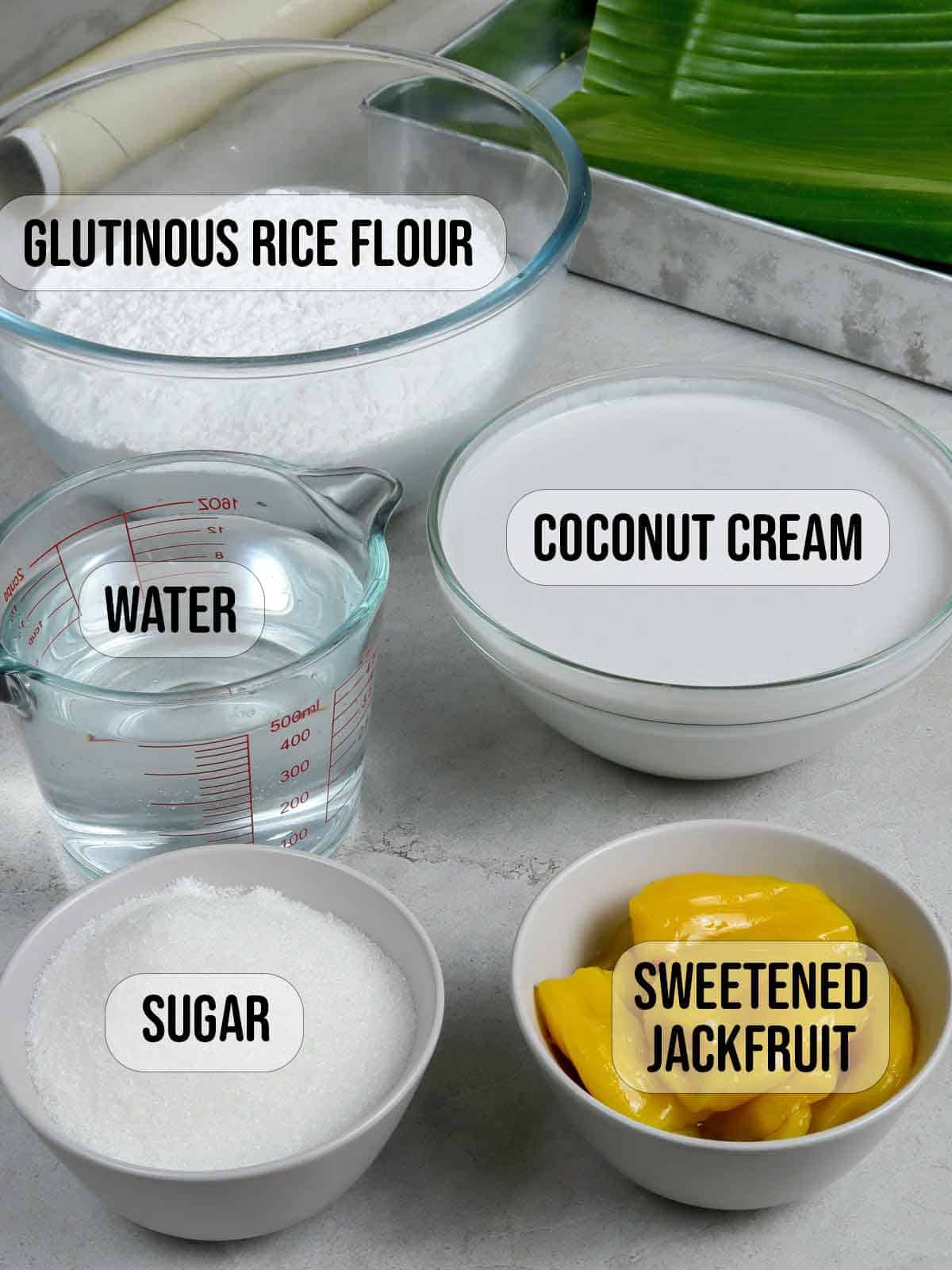
- Coconut cream- cooked until reduced to make latik and coconut oil. Check my post on how to make latik for additional tips.
- Glutinous rice flour- locally known as malagkit; also called sweet or sticky rice flour. Gives the cake its characteristic chewy texture.
- Water- I use a ratio of 4 cups flour to 2 cups water to achieve the kalamay texture I like.
- Sugar- adds sweetness.
- Sweetened jackfruit- I have a recipe for minatamis na langka if you prefer to make it from scratch, but I highly suggest buying bottled from the grocery store to save yourself extra work.
The traditional way of cooking kapit
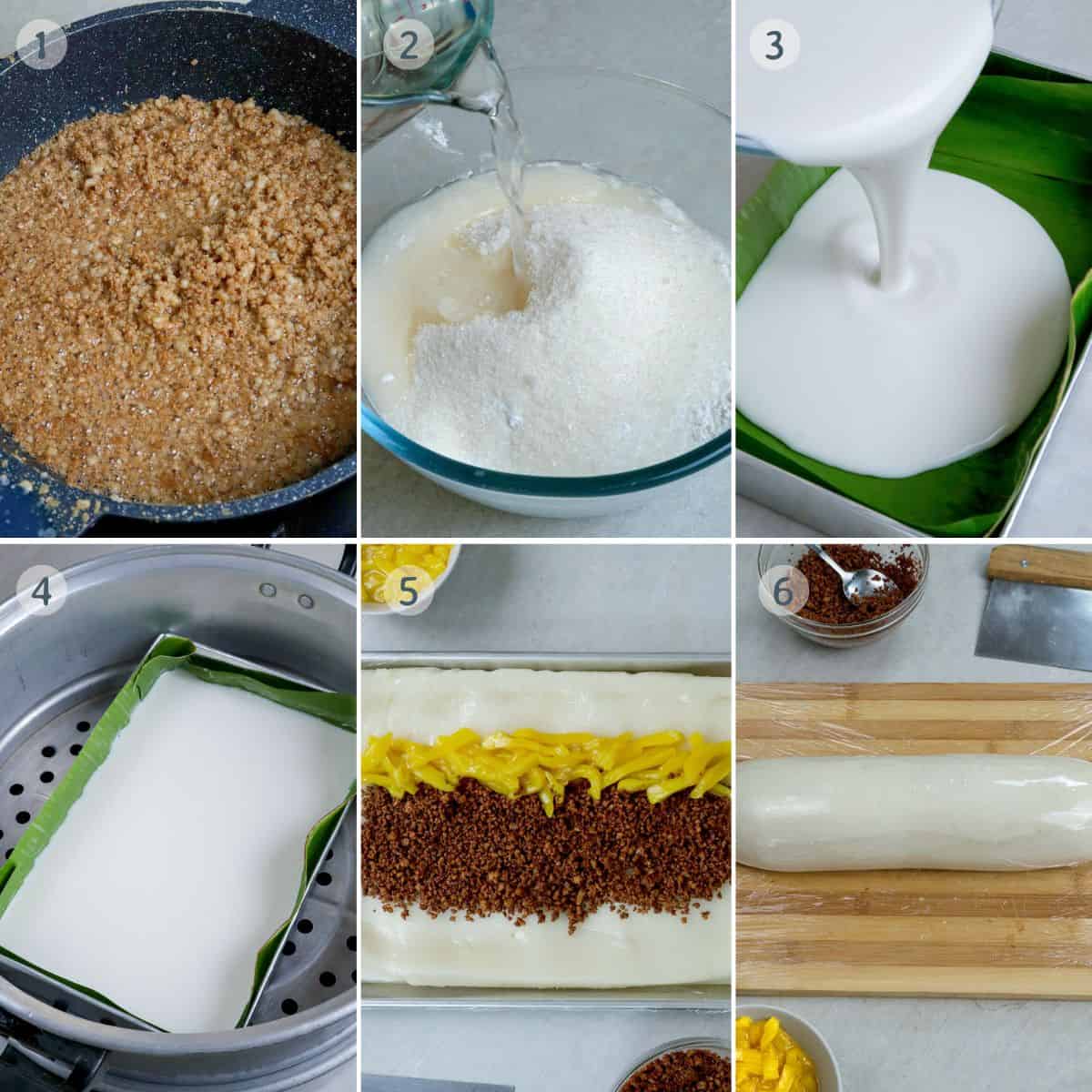
The authentic method of cooking kalamay kapit is portioning the pliable dough in plastic bags and boiling it in water until it floats. The glutinous rice flour is mixed with water to form a soft, pliable dough and then portioned in bags to cook in boiling water. Like palitaw, the bag parcels will float on top when done.
But while boiling the dough inside a plastic bag is traditional, it raises health concerns for some. As an alternative, you can wrap the dough in banana leaves and then boil in the hot water until it floats or place in a greased pan and steam until a toothpick inserted in the center comes out clean. Do not cook directly in the water as this will affect consistency.
Easy cooking steps
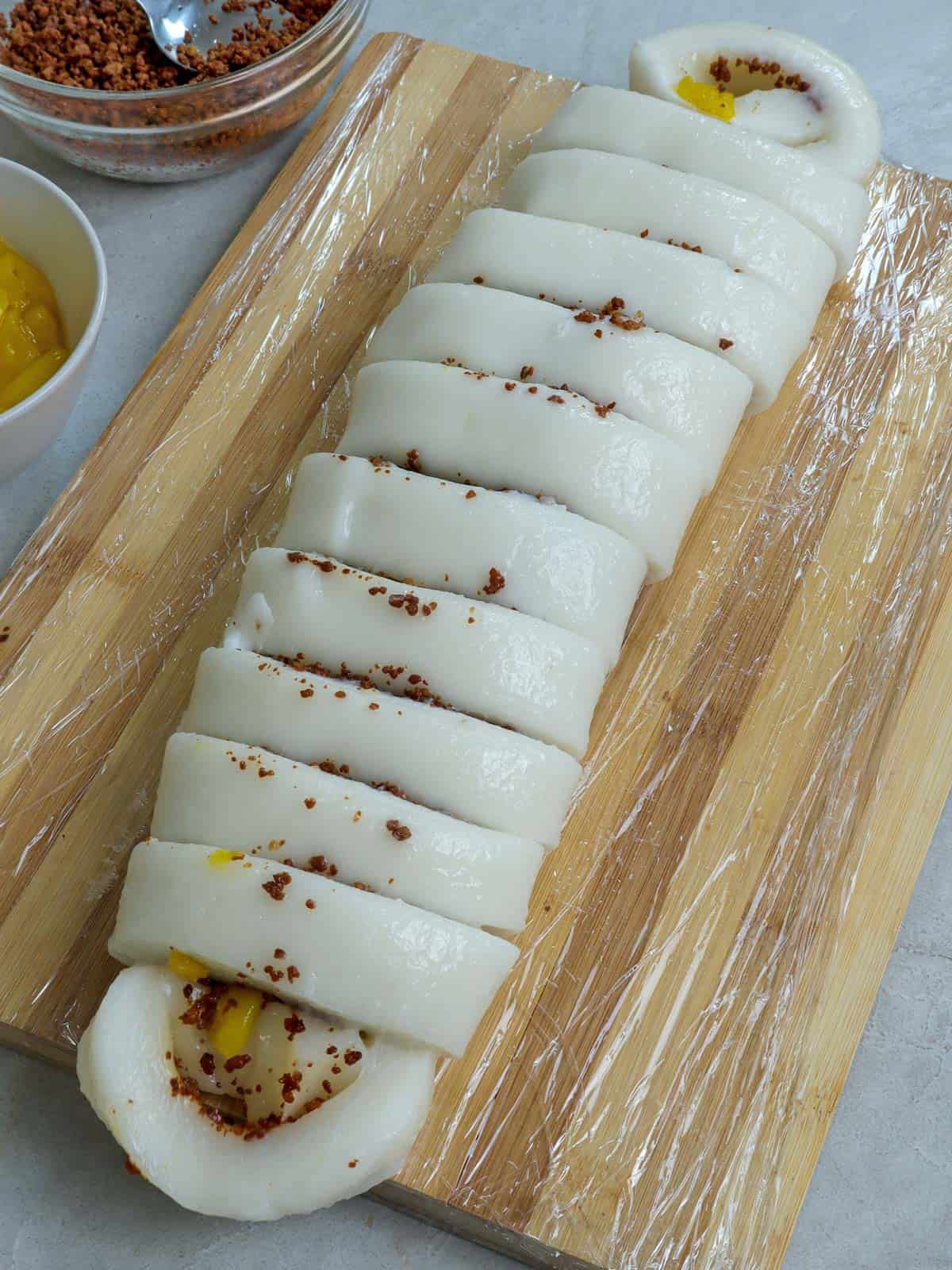
- Make latik- cook the coconut cream in a pan until oil starts to separate and solids begin to form. Continue to cook and stir until curds turn golden brown. Using a fine-mesh sieve, drain latik from the oil. Place in coconut curds and coconut oil in two small bowls.
- Make batter- in a bowl, combine rice flour, sugar, and water and mix until smooth.
- Transfer to pan- line a rectangular pan with with banana leaves and brush with coconut oil. Pour batter into the prepared pan and place in a steamer basket.
- Steam batter- cover with a kitchen towel and steamer lid. Steam for about 35 minutes.
- Top with langka and latik- remove the kalamay from steamer and place on a baking sheet lined with plastic film. Even out with a lightly oiled spatula. Spoon latik in the middle of the rice cake and add langka strips.
- Roll kalamay into a log on the long end, enclosing the filling. Wrap with the plastic film and twist ends of the film to completely seal.
Quick tip
Lightly grease the knife or spatula with oil to keep from sticking when slicing the kapit.
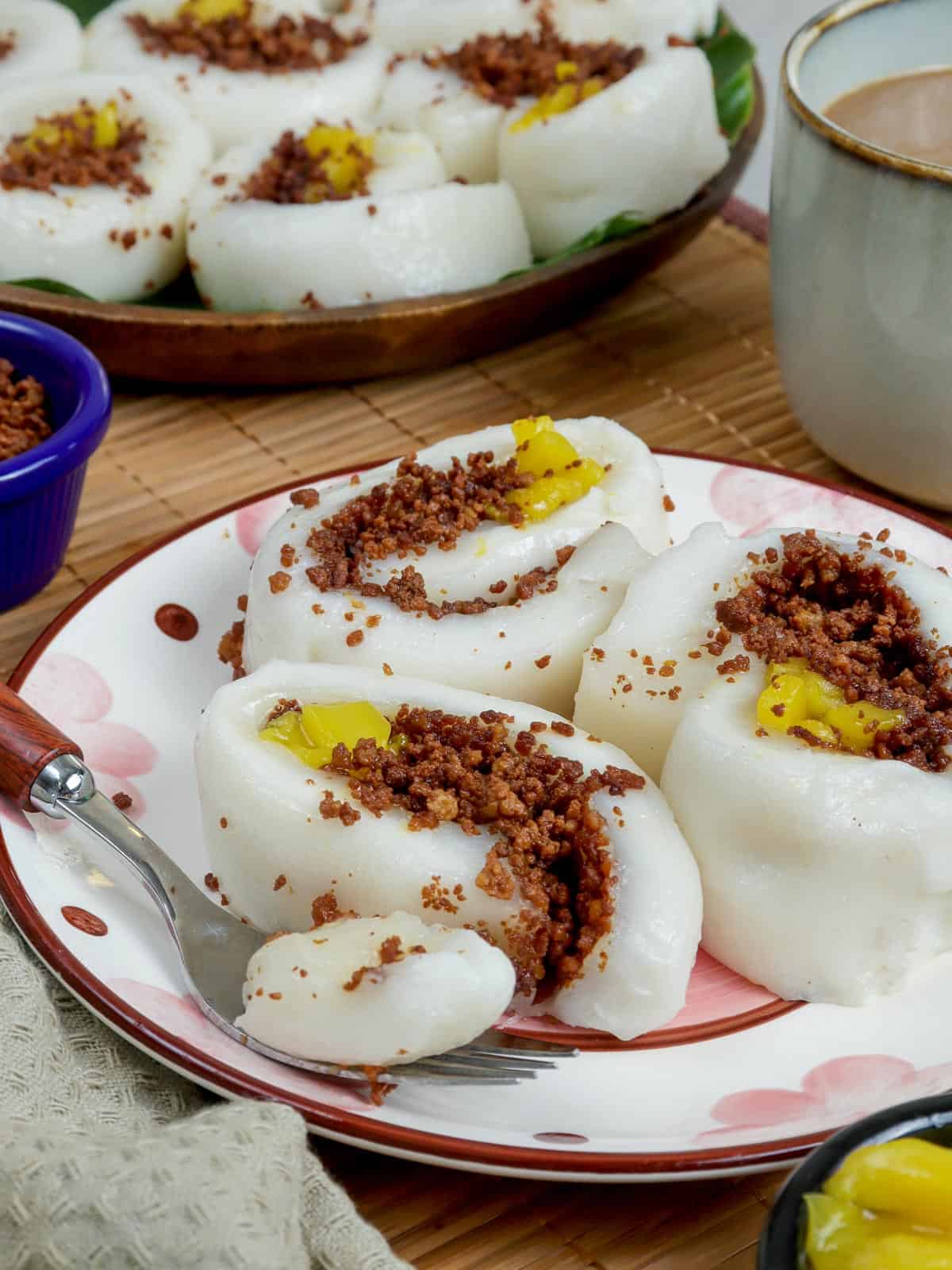
Frequently Asked Questions
What is calamay made from?
Calamay or kalamay is a Filipino delicacy made from glutinous rice flour, water or coconut milk, and sugar. Other flavorings such as fruit extracts, mashed root crops, or ground peanuts, can also be added for variety.
How long does kalamay last?
Stored properly, the sticky rice cake should last in the refrigerator for up to 3 days.
Serving suggestions
Unwrap the kalamay kapit and slice into serving portions. Enjoy as delicious and filling midday snack or after-meal dessert with hot chocolate or ice-cold calamansi juice.
More kakanin recipes
Ingredients
- 2 cups coconut cream
- 4 cups glutinous rice flour
- 2 cups water
- 1 cup sugar
- 1 cup sweetened jackfruit, cut into strips
Materials
Equipment
- 1 9 x 13 rectangular pan
Instructions
- In a pan over medium heat, add coconut cream and bring to a boil. Cook, stirring occasionally until liquid starts to thicken.
- Lower heat and continue to cook. As oil starts to separate and solids begin to form, regularly stir and scrape sides and bottom of the pan to prevent from burning.
- Continue to cook and stir until curds turn golden brown.
- Using a fine-mesh sieve, drain latik from the oil. Place in coconut curds and coconut oil in two small bowls.
- Line the pan with banana leaves and brush bottom and sides with coconut oil.
- In a bowl, combine glutinous rice flour, sugar, and water. Whisk until blended and smooth.
- Transfer batter to pan and place in a steamer basket. Cover with kitchen towel and lid.
- Steam for about 35 minutes or until a toothpick inserted in the center comes out clean. Remove the kalamay from steamer and place on a baking sheet lined with plastic film.
- Even out with a lightly oiled spatula. Spoon latik in the middle of the rice cake and add langka strips.
- Roll into a log on the long end, enclosing the filling. Wrap with the plastic film and twist ends of the film to completely seal.
- Unwrap the kalamay kapit and slice into serving portions.
Notes
Nutrition Information
“This website provides approximate nutrition information for convenience and as a courtesy only. Nutrition data is gathered primarily from the USDA Food Composition Database, whenever available, or otherwise other online calculators.”

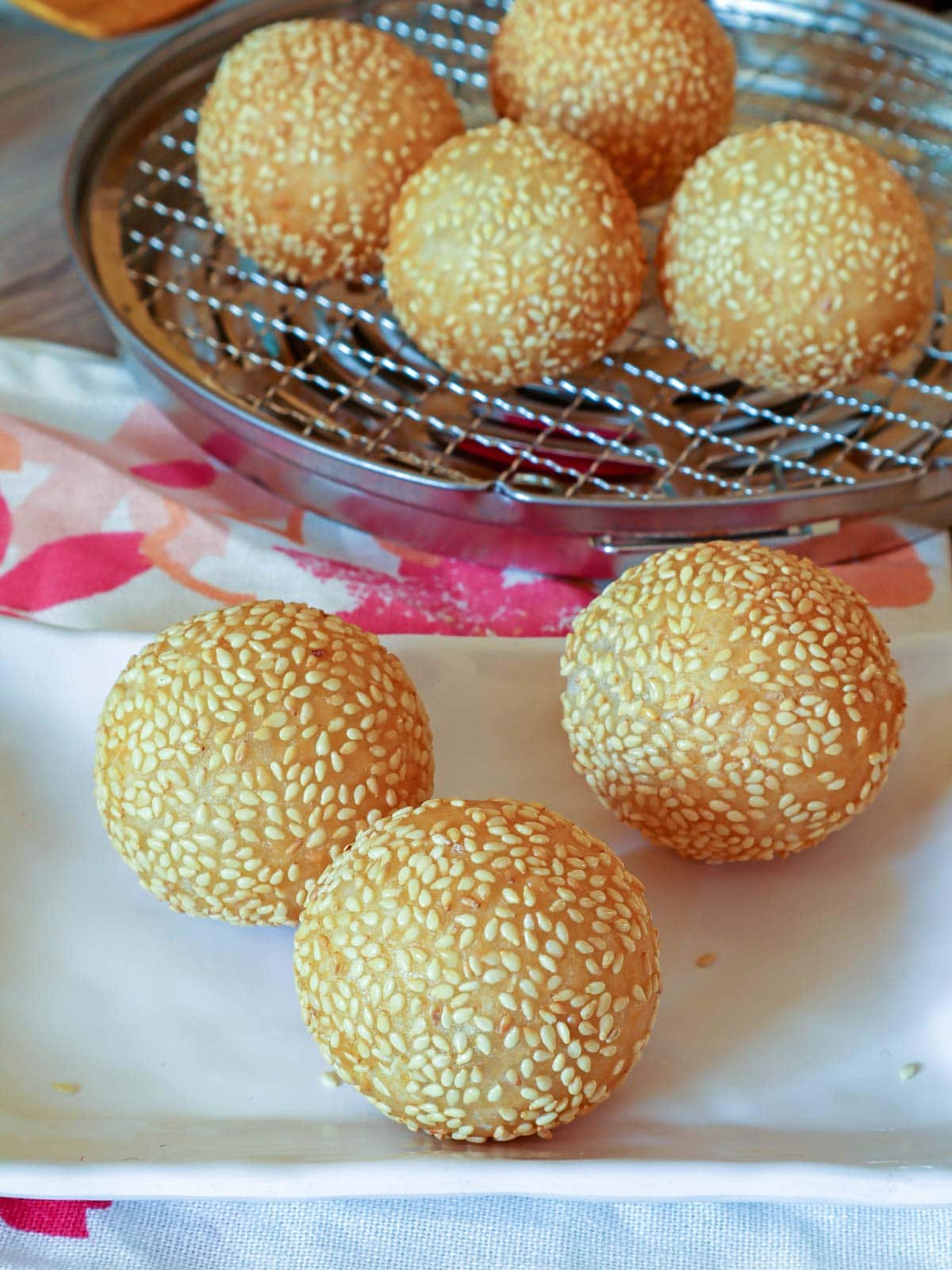
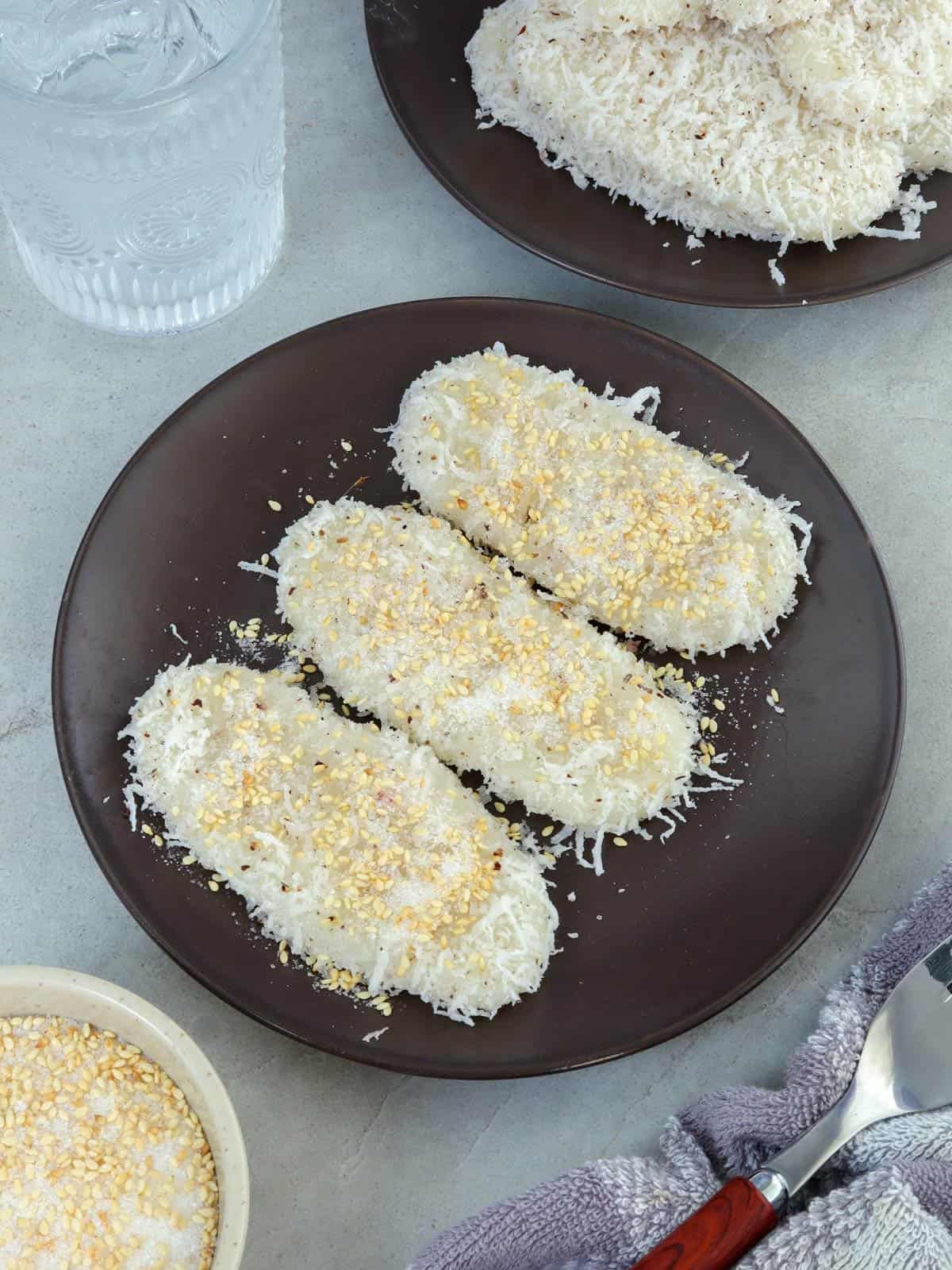
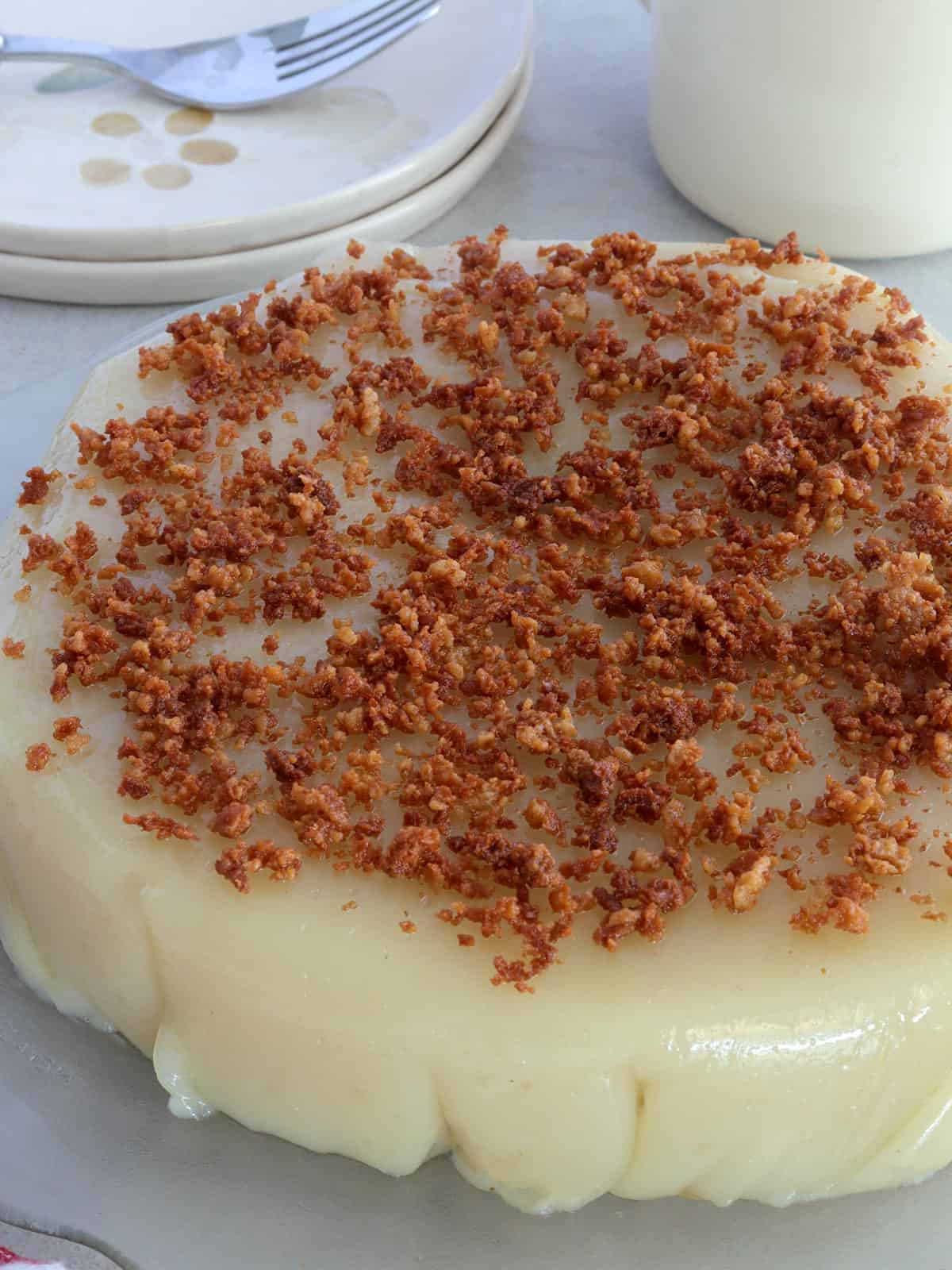
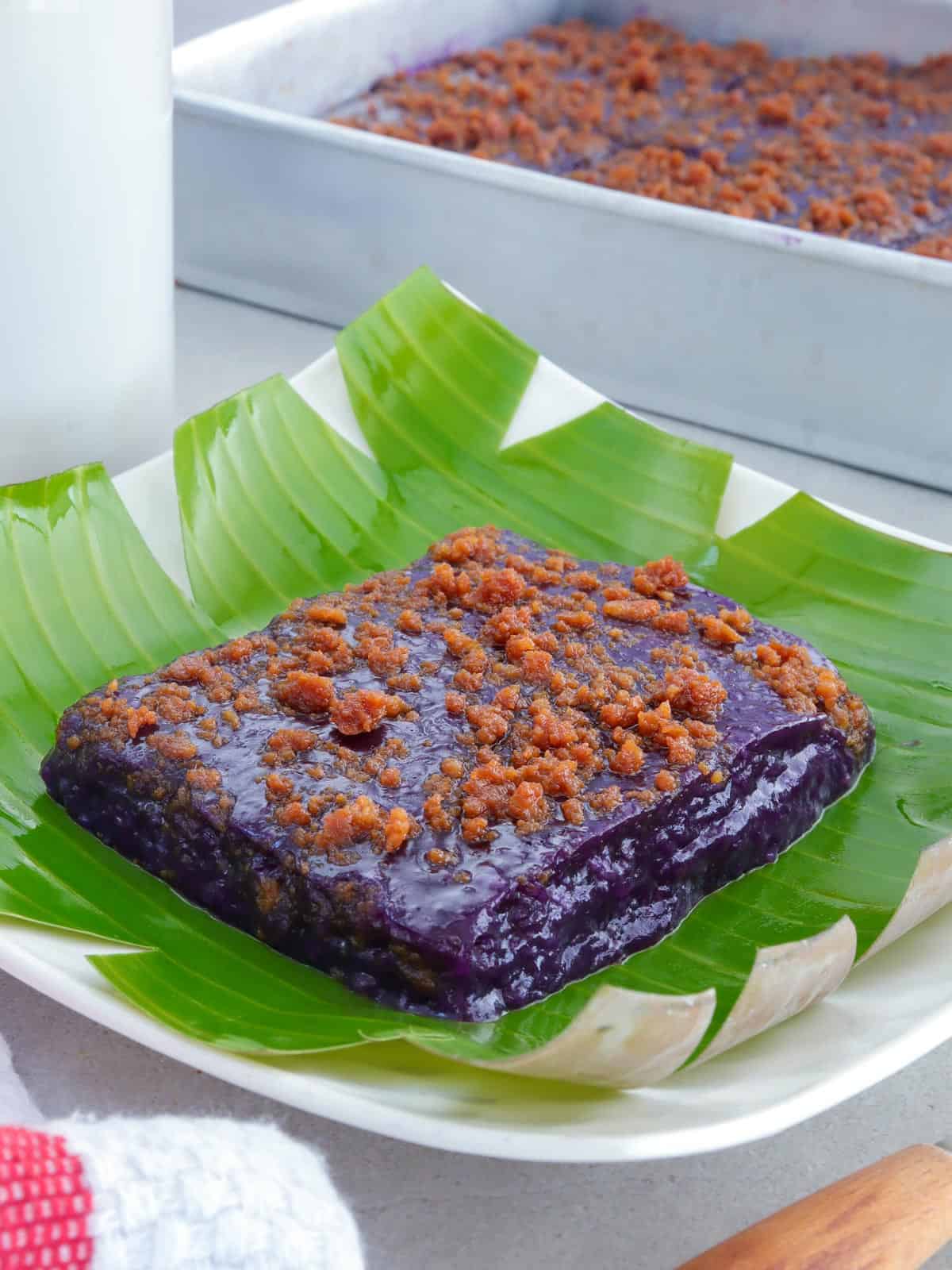
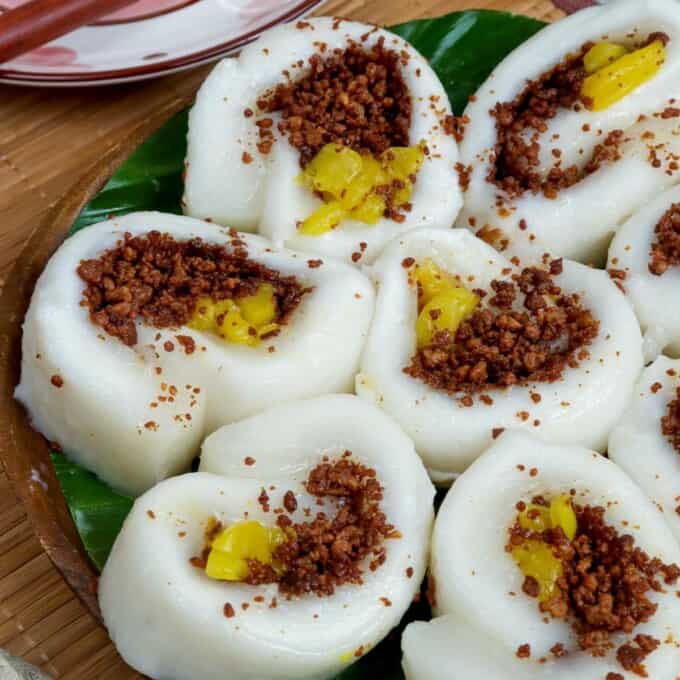

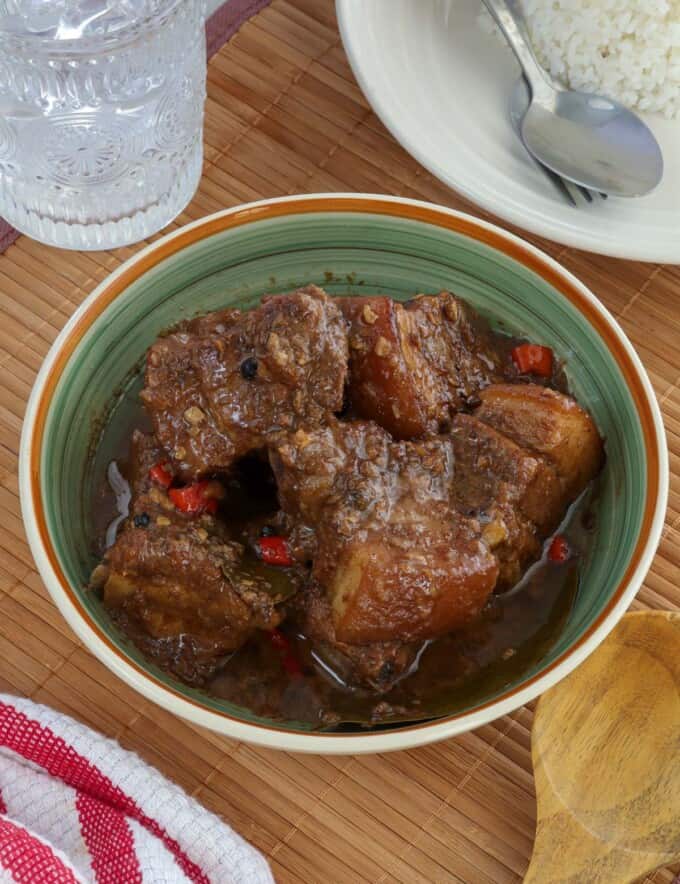
joahnna sy says
salamat po..sana in the future magawa ko sya or anak ko png business niya pra mkatulong sa pag aaral niya.
Mary jane Segotier says
Hi can i ask the exact measurements of the ingredients
Thank you
Lalaine Manalo says
Please scroll down to the recipe card. The complete measurements and steps are there 🙂
Lerma G. Ballada says
I'm also from tarlac, san roque.. i'm fond of kakanin, i love the palamig called "ginilu".. i remember my teen age days, my ate and me love to eat suman bulagta in one of the turo turos kainan in the market..🤗🤗
Maria says
It would be great if you can post pictures of the raw ingredients.
Lalaine says
I usually do but I thought step by step photos will be more helpful for this recipe 🙂
Simonette Agustin says
Thank you for posting this recipe. I’m from Toronto canada. This delicacy reminds me of my childhood days in tarlac. When my mom take me for grocery shopping at the tarlac palengke we always go to the kainan inside the palengke. I always ordered this and pancit luglog.
More power and thank you for sharing your recipes.
Lalaine says
I grew up in Tarlac, too. One of my fondest memories also was going with my mom to the wet market on F. Tanedo Street. I always looked forward to eating in one of the turo-turo after we did finished with our "palengke". 🙂